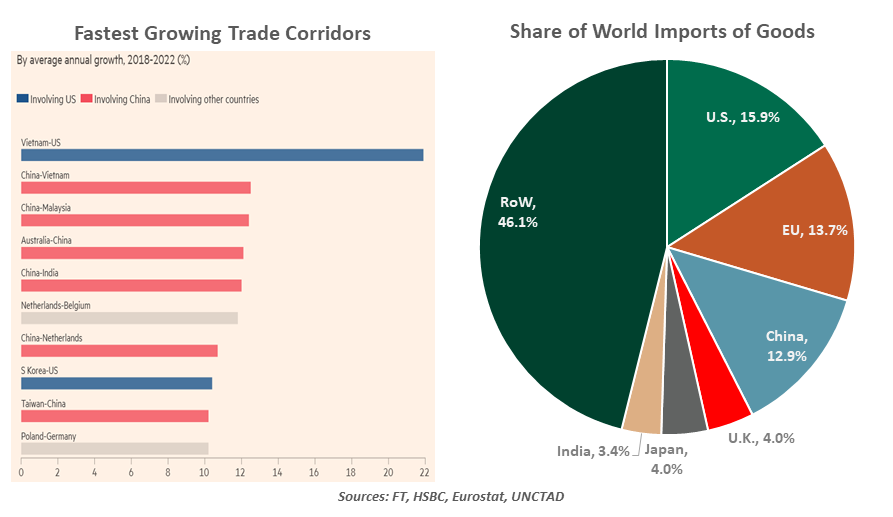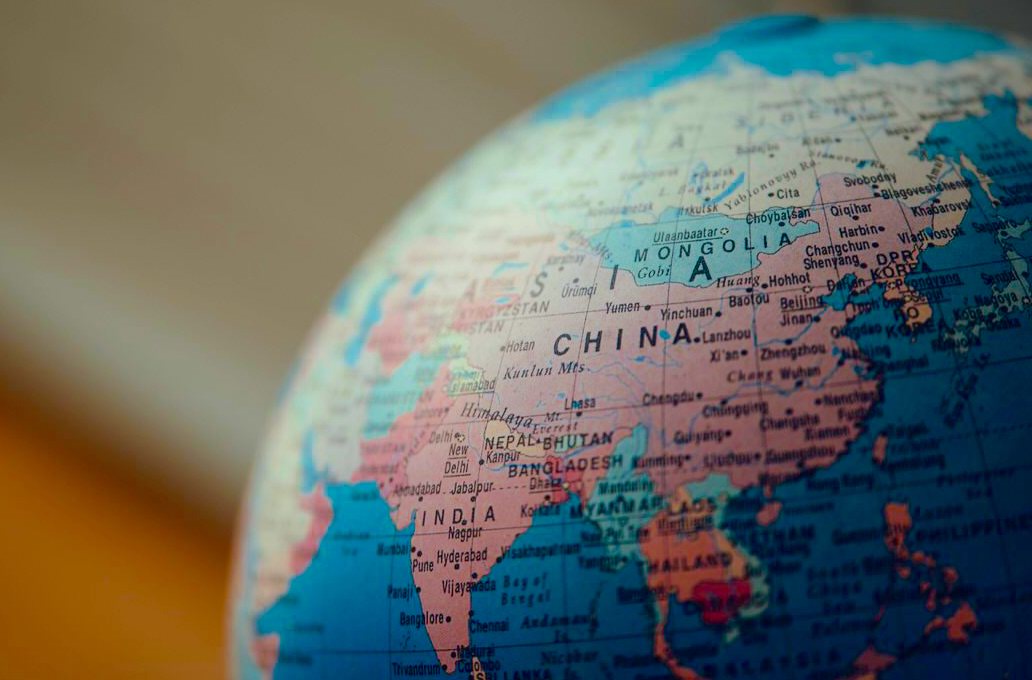by Vaibhav Tandon, Senior Economist, Northern Trust
Global trade patterns are evolving.
o anyone going through a breakup, just remember this lyric from Bernadette Peters: “If I’m patient the break will mend and one fine morning the hurt will end.”
As the United States endeavors to break up existing global trading patterns, its partners are feeling hurt. But many have been finding ways to get over the pain.
Even before this year’s escalation in trade frictions, international commerce had been shifting away from traditional transatlantic routes. Pathways involving Asia and other regions have gained. Since 2018, eight of the ten fastest-growing trade corridors do not include the United States.
The U.S. withdrawal from the Trans-Pacific Partnership in 2017 did not spell the end of the effort, as other nations went on to form a new pact without America. After two and a half decades of negotiations, the Mercosur trade partnership between the European Union (EU) and South America eliminates tariffs on almost all Latin American exports to the EU. China has been increasingly diversifying its export profile.
America is no longer the only game in town for global trade.
Even Canada has been making concerted efforts to diversify its trade away from the United States, reflected in growing commerce with Europe and emerging markets. Canada’s ”trade ministry” was officially renamed the ”ministry of international trade diversification” in 2018. Japan, South Korea, and China, once trade rivals, recently came together to explore a joint response to U.S. tariffs.
The U.S. remains the world’s largest economy and the top destination for exports from a number of nations. While America continues to enjoy supremacy in global finance and military spending, the same cannot be said for its role in international commerce.
In 2000, the United States was the top trading partner for over 80% of economies. Today, its share has shrunk to 30%, with China emerging as the top trading partner for more than 120 nations. The U.S. share of global imports is about 16%. By contrast, the European continent and the three largest Asian economies combined account for 38% of total demand for imports. According to the Global Trade Alert, if the U.S. were to halt all imports, America’s key trading partners could recover all their lost exports within five years.
The increasing use of sanctions and disruptive U.S. trade policies have been the key triggers behind a global reordering of trade networks. The current U.S. administration’s fresh salvos will only motivate nations to become less reliant on the world’s largest economy.

American corporations have been the biggest beneficiaries of the U.S.-led liberal international order, and they therefore have the most at risk from America’s retreat from free trade. U.S. multinational corporations currently generate over 40% of their revenue from abroad. Profit margins for S&P 500 companies had nearly doubled to around 13% after the 2000s, coinciding with China’s entry into the World Trade Organization. Diminished trade with those markets will limit their growth potential and their profits.
The more the U.S. threatens tariffs, the harder its partners will work to increase commerce with each other. While they will endure some pain from the separation, they will learn to love again.
Copyright © Northern Trust















